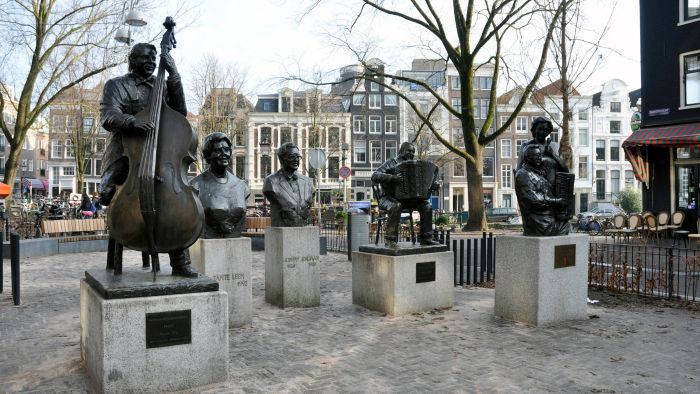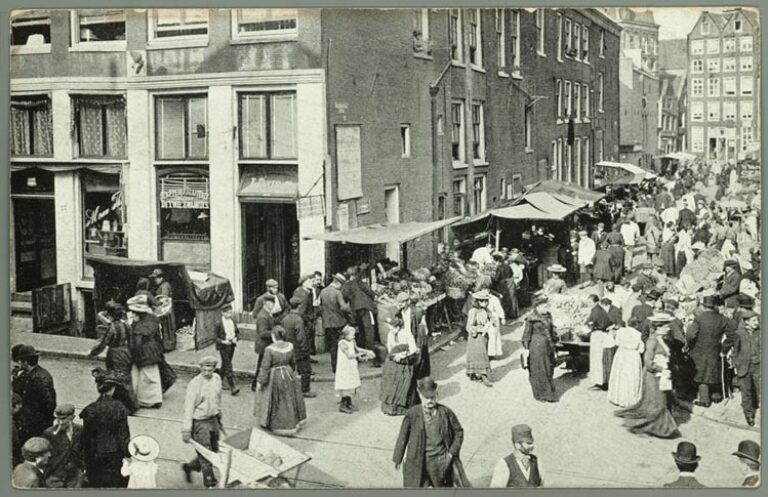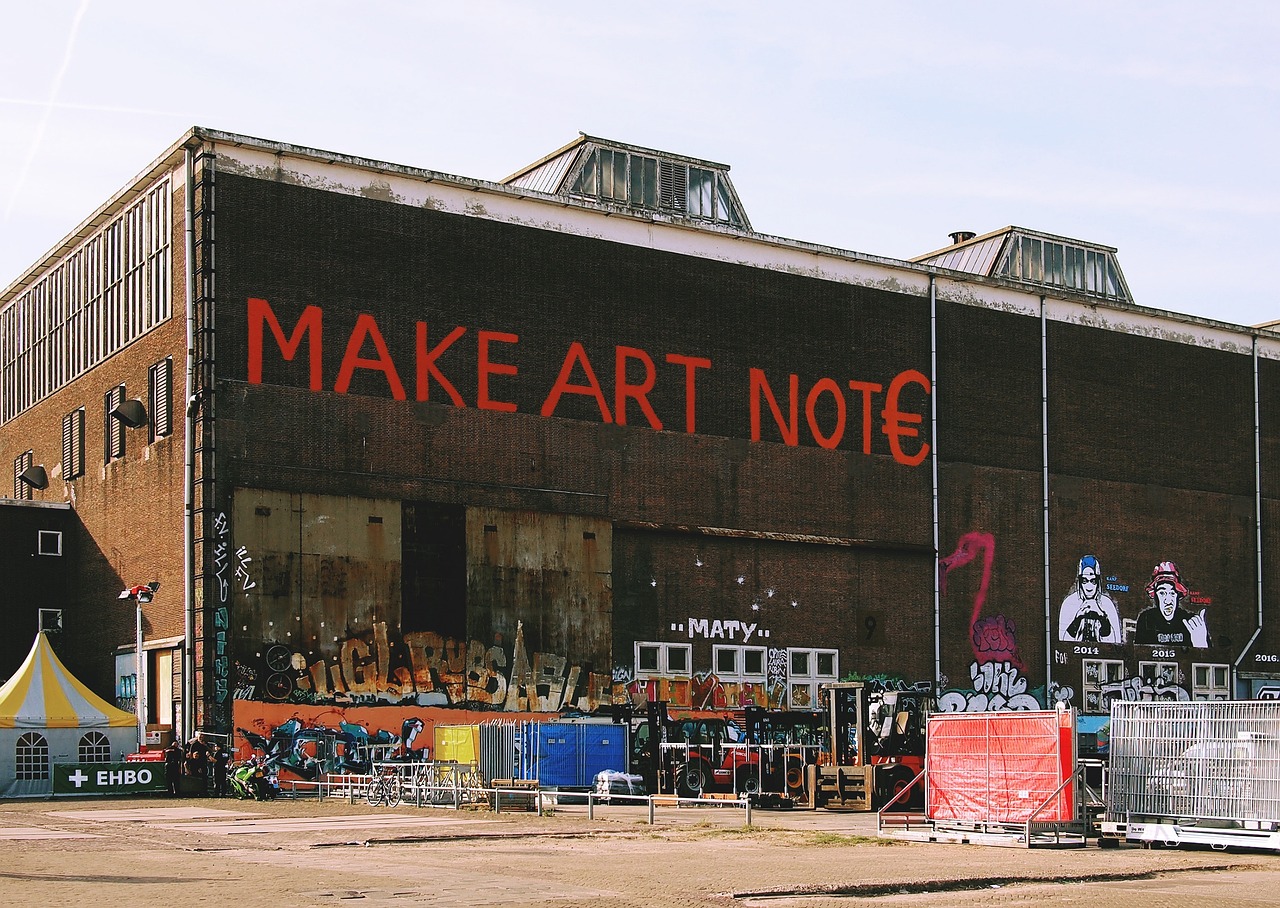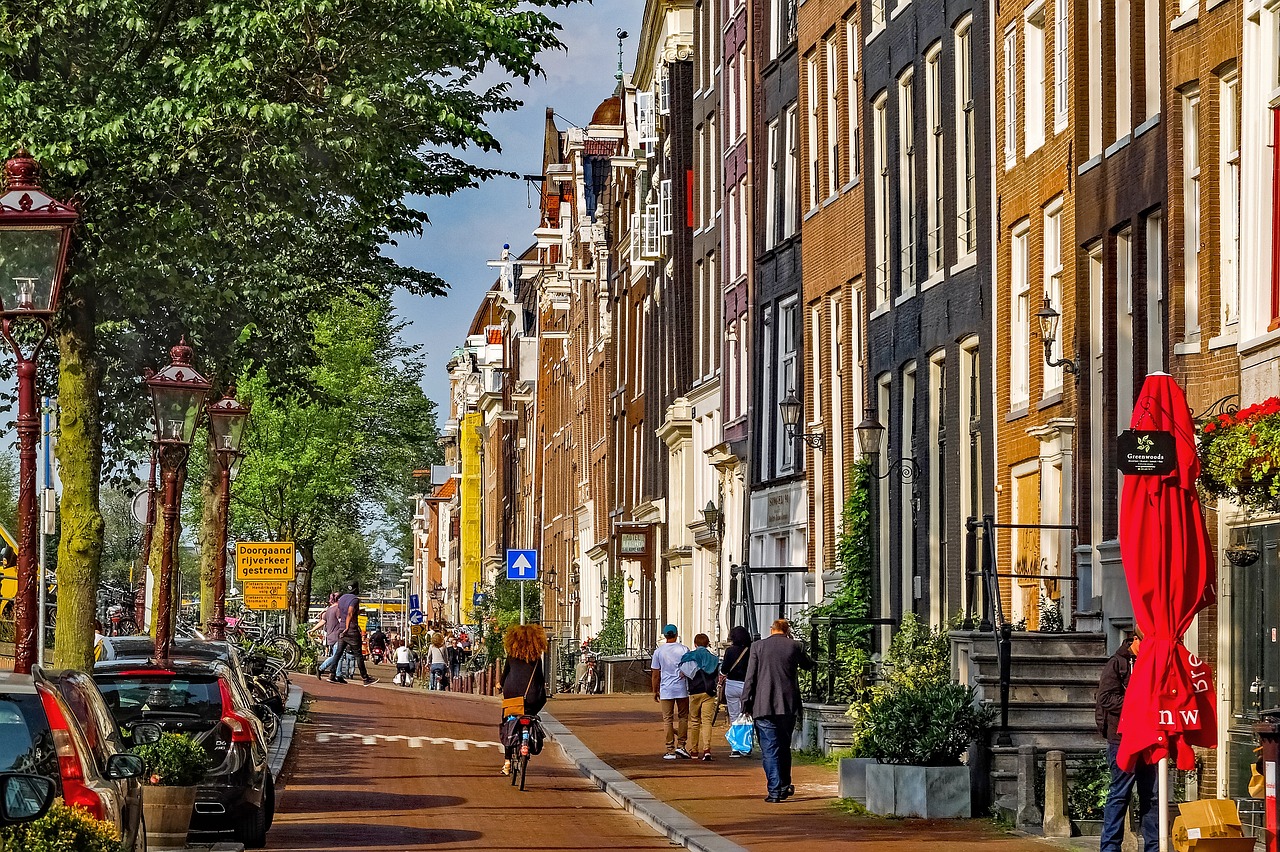Biking through Amsterdams historic neighbourhoods
From the first fisherman that settled along the Amstel river, to the prosperous golden age, through war and rebuilding – Amsterdam’s story is one of resilience and progress. When we dive into the history of the city we can truly appreciate what it went through and where it is right now.
In this blog we focus on three well-known neighbourhoods of Amsterdam that deserve your visit. Grab your bike and explore. You might have a total different view of your trip after indulging on some knowledge.
Jordaan
The Jordaan is one of the most famous old neighbourhoods in the city and full of history. It now is one of the most expensive and desired places to live in, but once was an area for the poor, working class.
In the 19th century the living conditions in the Jordaan were bad. Big families with around 9 kids were living in small, shabby houses. Trash was thrown on the streets and in the canals. The buildings were not kept up with, and were rotting and
The hygiene levels were so poor, with the lowest point in 1832 with the Cholera pandemic. The government finally decided to take measure to ease the situation. The canals full of trash and fuming, reeking and allegedly full of diseases were closed. From the eleven canals that it the neighbourhood used to have, there now five left.
 Image: Gemeente Amsterdam
Image: Gemeente Amsterdam
The situation did not get any better after the war. It wasn’t until the 70’s that this area received a full on renovation. The cohesion from the Jordanese people gave this area their distinct character. The statues on the Elandsgracht at the Johnny Jordaan Plein are some of the Folk-heroes famous for their typical Jordanese song.
There are many theories as to how the neighbourhood got its name. One states that the then-reigning emperor, this guy named Napoleon Bonaparte, admired the greenery of the place and called it ‘le jardin’ – the garden.
Napoleon was the Netherlands first king. From the Fatbike Store on Damrak you can walk for 5 minutes and visit the Royal Palace at Dam Square, where Napoleon used to reside.
The Jewish quarter

Amsterdam had a tolerant view towards newcomers and people with different religions. In the 17th century Jewish people, from Spain and Portugal, settled in the city.
They moved to the Nieuwmarkt and Waterlooplein, the area now called Jodenbuurt. It became the Jewish centre for trade, culture and religious activities. The Portuguese synagogue being an unmissable hint to this period.
Image: Jewish Cultural Quarter
It was during this period that the city adopted the name ‘city of diamonds’ (with even a visit from Sean Connery’s form the Bond film Diamonds are Forever). You can learn more about Amsterdam and its shiny-rock history at the diamond museum.
When the Netherlands was captured by Nazi Germany in 1940 the mostly Jewish Neighbourhood was met with many increasing laws and restrictions. In February 1941 The German occupier decided to close of the ‘Jewishcorner’, where 25.000 Jewish people were living at that time, to centre them at one spot.
In their battle against the NSB, the inhabitants from the Jodenbuurt were supported by fellow Amsterdammers, mostly from de Jordaan and the Oostelijke Eilanden.
After the first pogroms in February, Amsterdammers took it to the streets and went on strike. On Jonas Daniël Meijerplein you will find a statue of the ‘Dokwerker’, a monument to this rise against the occupants.
The Netherlands was freed from the Germans in 1945 and the Jodenbuurt was left mostly disserted and neglected. After rebuilding and renovating, the area was livable again and grew to a vibrant area again.
The Jewish monuments in the area show the history of the Jewish quarter. The old synagogue of the Uilenburgersjoel is a great example. If you want to learn more about this neighbourhood and Jewism in Amsterdam and the Netherlands, visit the Jewish Cultural Quarter – which is also located in this area.
 NDSM-wharf
NDSM-wharf
NDSM is an abbreviation of the ‘Nederlandse Dok en Scheepsbouw Maatschappij’ > Dutch shipbuilders company. The North of Amsterdam at the NDSM Wharf is now a cultural hup for young creatives, but as the street names give away it used to be a shipyard.
NDSM was known worldwide as a very successful and innovative company. However, the company was struggling after the oil crisis, political games and competition. The company went out of business in 1984.
The buildings from the company and the old shippers remained. After the closure of the shipyards, the abandoned buildings were squatted for years to come. Bringing a young, creative crowd to this area.
This hip image has remained throughout the years. The area developed breeding places, with affordable housing and ateliers for artists.
 Where are you taking your bike trip?
Where are you taking your bike trip?
The Fatbike tour takes you from the city centre to the NDSM-wharf, Oostelijk Havengebied to plantagebuurt and pass Nieuwmarkt, the former Jodenbuurt. Our well-informed guides can tell you even more about these and other Amsterdam areas and their history.
Now you have some more knowledge about Amsterdam it is time to get on your bike and get ready to explore!

